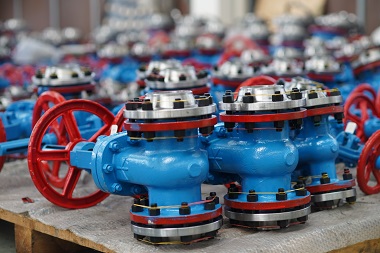Before Installation:
- Verify the valve for any defects.
- Complete the welding and allow the flange to cool.
- Wash with mild detergent to remove waste, pickle paste, rust and welding residue.
- Ensure there is no misalignment of flange and gate valve and remove all warpages.
Also Read : Vertical Installation Of Gate Valves: A Better Choice
During Installation:
- Install spacing bolts and the two flanges to give space for piping.
- Insert bolts when the pipes are centred on securing the valve bottom from falling.
- Tight all the bolts in stages to apply even pressure so the valve, flanges and gasket seals.
- Operate the valve after installation to ensure that the valve is in place.
Valves are a critical part of any water or gas system. Valves may look and sound simple, but they come in all sizes, shapes and have different components. The complex structure must be properly installed and maintained to prevent failures, inconveniences and high cost, health repercussions. Some of the tasks you need to adhere to before, during and after installations for the better functioning of gate valves are given below.
Before Installation:
- Create a detailed specification of all the valve components, including approvals and certifications, to ensure a superior product.
- Protect the valve against corrosion and keep away from debris as it may lead to binding and galling.
- Check the valve manufacturer documentation against the specification.
During Installation:
- Install gate valves vertically to let gravity take over some work.
- Remove all debris from the pipeline to prevent any blockages.
- Consider bigger size concrete vault, the valve can riser, and valve box to avoid wasting time, money and effort on excavations during change-outs.
- Decide the direction to open the valve and keep it the same for the entire pipeline system.
After Installation:
- Ensure to open and close all valves once a year to verify their smooth operation and clear all debris.
- Document all the issues that take place to find a proper solution and create a better specification.
- Adjust the valve box to avoid any oversights of contractors or workers.
For the valves to last long, you need to continuously and regularly perform the following maintenance tasks.
- Avoid using valves at pressures more than working pressure.
- Before regular maintenance, relieve the system and valve pressure.
- If the valves are not regularly used, perform open and close valves once a month.
- Inspect the valve seat and face and remove any foreign objects to avoid jamming.
To replace a defective valve,
- Perform reverse installation steps to remove the valves from pipelines.
- Remove the stem and top body to replace the valve gate.
- Screw out and remove the gate to replace it with the new part.
- Install the top of the body to refit ii into the line.
As the leading industrial valve suppliers in Indonesia, we produce and supply industry graded valves and petroleum equipment that best fits all your industrial needs. Contact us today for more details.
